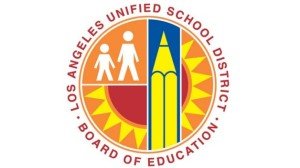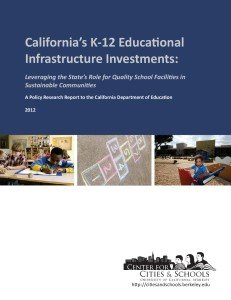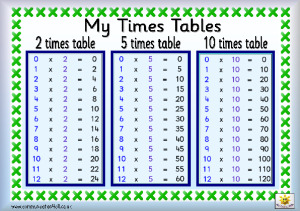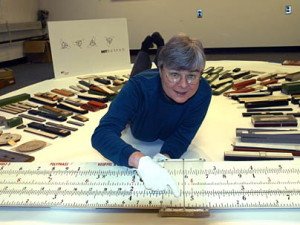Articles
LOS ANGELES SCHOOLS LEADER WANTS TO SLOW IPAD ROLLOUT
By John Rogers
Associated Press – 10/16/2013
LOS ANGELES — The leader of the nation’s second-largest school district moved Tuesday to put the brakes on an ambitious $1 billion plan to place iPads in the hands of every student after some of the first to get them used the devices to tweet, text and play games rather than study.
Under a revised plan, all 650,000 students in the Los Angeles Unified School District would have iPads to use by the end of 2015 rather than the original target date of 2014. Principals and certified  teachers at all district campuses would have the extra time to attend orientation programs on the use of the devices.
teachers at all district campuses would have the extra time to attend orientation programs on the use of the devices.
“I am hopeful that this revised plan meets the concerns of board members over how best to provide our students with the technology they need to excel in the classroom and succeed in their careers,” Superintendent John Deasy said.
Concerns were expressed last month that the original target date was too ambitious after more than 300 students at three of the first campuses to receive iPads quickly cracked their security settings and began surfing the Web.
Deasy proposes handing out the next batch by April to three dozen of the district’s campuses most lacking in technology. Other schools would get them between August 2014 and December 2015. Deasy said it’s important to get the tablets to students quickly because computerized state testing is being introduced in 2015
TORLAKSON BACKS $9B BOND FOR K-12 TECHNOLOGY
By Kerry Benefield
The Press Democrat 10/23/2013
California’s state schools chief is backing a $9 billion bond measure in 2014 to build up the technology infrastructure at K-12 campuses.
State Superintendent Tom Torlakson said Tuesday that California’s schools must be prepared and outfitted to handle a dramatically new standardized testing system that eventually will require all students to be tested using computers rather than pencils and fill-in-the-bubble sheets. “There are big issues with bandwidth, Internet-connecting devices,” he said.
Bond money would not be used for devices like iPads, he said, but would focus on expanding and improving connectivity for all campuses. Assemblywoman Joan Buchanan, D-Alamo, is expected to sponsor the bill.
 Privately funded polling to test voters’ appetite for school spending is expected to be conducted in the coming months. Voters in 2006 approved a $10.4 billion school bond package, including $7.3 billion for capital projects for kindergarten through 12th grades. Of those funds, $318 million remains unreserved for projects in six categories including modernization, new construction and career-technical facilities.
Privately funded polling to test voters’ appetite for school spending is expected to be conducted in the coming months. Voters in 2006 approved a $10.4 billion school bond package, including $7.3 billion for capital projects for kindergarten through 12th grades. Of those funds, $318 million remains unreserved for projects in six categories including modernization, new construction and career-technical facilities.
Last year, voters approved Proposition 30, temporarily increasing the state sales tax by a quarter-cent and income taxes on the wealthy by 1 percent to 3 percent. The move staved off what Gov. Jerry Brown said would have been $4.8 billion in cuts to K-12 education last year but did not infuse new money into education coffers.
“Some people thought Prop. 30 cured everything,” Torlakson said. California’s third- through 11th graders are set to test the new standardized testing system this spring. California bucked demands of U.S. Secretary of Education Arne Duncan when lawmakers this month approved the suspension of the Standardized Testing and Reporting, or STAR, program — a major component of the federal accountability system.
Instead, students will participate in a field test of the Smarter Balanced exam that is being called a “test of the test” and will highlight how prepared schools are to give the exam entirely on computers. While all tests must be administered on computers next spring, paper-and-pencil exams will be available in the three subsequent years to schools that can prove their technology is inadequate to handle the administration of the test.
“Testing the test” next spring will let school administrators know whether they truly are prepared for spring 2015, when official test results will be released and counted. “We don’t want it to be like what happened in many states with the Affordable Care Act,” Torlakson said of the rocky opening weeks of health care exchanges. Online registration has been riddled with problems.
NEW EDUCATION STANDARDS END ROTE LEARNING, CURSIVE
Jill Tucker
Monday, June 11, 2012 (SF Chronicle)
Like fashion, trends in public education come and go. What’s in vogue depends on the decade and often reflects which way the political wind blows and what shiny gadgets have hit the market. With the threat of Soviet innovation and Sputnik, old math became new math in the 1960s and then back to old arithmetic about 10 years later.
Phonics, like bell bottoms, always makes a comeback, although some fads are but brief historical blips. Think the metric system and mullets. But with such limited time to teach, there have long been debates about what children need to know and how and when to teach it – and when to stop teaching something altogether.
debates about what children need to know and how and when to teach it – and when to stop teaching something altogether.
“Is it still necessary for kids to learn their times table when they can pick up their iPhone and ask Siri what is 20 times 2?” asked Dan Domenech, executive director of the American Association of School Administrators.
A new set of national standards, called the Common Core, has sought to answer that, offering states a guide for what skills and knowledge children should have at the end of each grade level. The ultimate goal is to get every child college and career ready. That means, cursive is out and keyboarding is in. Repetition and rote learning are passé while critical thinking is, well, critical.
Literature and novels see less class time than literary nonfiction and informational texts, including essays and speeches. Spelling gets a cursory nod, with the caveat that kids can consult “references.”
New National Push
Critics have called the effort a federal push that weakens states’ authority over public schools. Yet the standards, a multistate effort coordinated by the National Governors Association and Council of Chief State School Officers, are optional, and states that do adopt them can choose to add more content.
 Common Core State Standards don’t dictate how to teach the knowledge and skills. That’s up to districts and teachers.
Common Core State Standards don’t dictate how to teach the knowledge and skills. That’s up to districts and teachers.
Since the standards were released in 2010, nearly every state has signed up to use the new standards, with districts like San Francisco and Oakland leading the way. Texas, Nebraska, Virginia and Alaska have opted out.
The new standards, which in the coming years will be incorporated into new textbooks and assessment tests, expect students to apply skills or information rather than, say, solve 50 multiplication problems on a worksheet.
“You kind of make choices on what you’re going to spend significant time on,” said Maria Santos, Oakland Unified deputy superintendent.
In sixth grade, for example, that means “draw evidence from literary or informational texts to support analysis, reflection and research,” or “use technology, including the Internet, to produce and publish writing and to interact and collaborate with others.”
In other words, the new system focuses less on learning facts and more on using that information to synthesize and create new ideas, said Domenech, a supporter of the national standards. “What we’re trying to do is to take the level of learning to the higher levels of cognitive development,” Domenech said. “What (students) have to learn now is not how to get the data, but what to do with it when you have it.”
But the Common Core doesn’t skip over the basics, such as multiplication tables or spelling, it just doesn’t dwell on them, Domenech said. “We cannot lose sight of the basic skills,” he said. “On the other hand, we shouldn’t spend 12 years teaching basic skills.”
other hand, we shouldn’t spend 12 years teaching basic skills.”
Mike Konshak, the curator of the online International Slide Rule Museum, cautions against an overreliance on technology. For starters, batteries die. He also cited what he called “the lost art of numeracy” that came with the advent of calculators. He’s not advocating for slide rules to return to the classroom, but he said they required the users to have a number sense, an idea of the size or scope of an answer to a problem. “You’d have this feel of what your number should be,” Konshak said. “Kids nowadays punch it in the calculator, and if they have fat fingers … there could be an erroneous answer in there, and they would just assume that’s the correct answer.” A balancing act.
Parents might also feel a bit uneasy with these changes as the textbooks get smaller and their children are spending less time studying flash cards, drilling arithmetic or memorizing facts and more time on projects that, say, delve into space exploration. It will require new teaching styles and classrooms, more like a high-tech startup, with students clustered together in teams solving problems.
 Whether Common Core will stand the test of time or fade away like feathered hair remains to be seen. In the meantime, Oakland third-grade teacher Oceanhawk will be combining past and present, teaching multiplication tables and spelling and hard-core grammar in addition to in-depth projects and critical thinking.
Whether Common Core will stand the test of time or fade away like feathered hair remains to be seen. In the meantime, Oakland third-grade teacher Oceanhawk will be combining past and present, teaching multiplication tables and spelling and hard-core grammar in addition to in-depth projects and critical thinking.
“It’s not either-or,” the Encompass Academy teacher said. “I’m doing all the basics, but I’m tying it into the core standards through art and science.” And she insists her students master the loopy cursive letters crafted by students through the centuries. Manuel Sanchez, 8, is OK with that. “My grandmother and my dad write in cursive,” he said. “So I just want that family tradition to keep going.”

Recent Comments